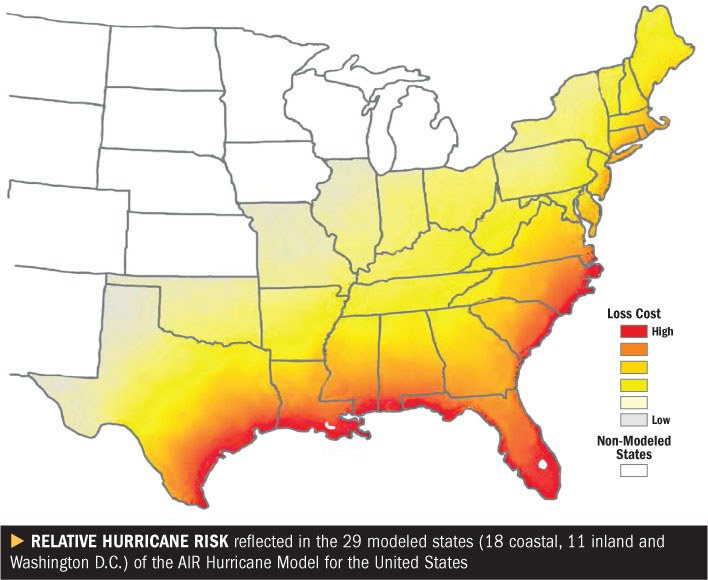Because damaging winds are rarer far inland, the hurricane risk to the interior of the U.S. can be easy to overlook.
 But storms can travel hundreds of miles after landfall and, on rare occasions, hurricane remnants sometimes reintensify after transitioning into extratropical cyclones or combining with pre-existing mid-latitude systems. Moreover, exposed inland properties tend to be more vulnerable compared to coastal construction.
But storms can travel hundreds of miles after landfall and, on rare occasions, hurricane remnants sometimes reintensify after transitioning into extratropical cyclones or combining with pre-existing mid-latitude systems. Moreover, exposed inland properties tend to be more vulnerable compared to coastal construction.
For these reasons, a robust hurricane model needs to extend far beyond coastal counties—and even coastal states—to reflect the full spatial extent of potential losses.
Recommended For You
Want to continue reading?
Become a Free PropertyCasualty360 Digital Reader
Your access to unlimited PropertyCasualty360 content isn’t changing.
Once you are an ALM digital member, you’ll receive:
- Breaking insurance news and analysis, on-site and via our newsletters and custom alerts
- Weekly Insurance Speak podcast featuring exclusive interviews with industry leaders
- Educational webcasts, white papers, and ebooks from industry thought leaders
- Critical converage of the employee benefits and financial advisory markets on our other ALM sites, BenefitsPRO and ThinkAdvisor
Already have an account? Sign In Now
© 2025 ALM Global, LLC, All Rights Reserved. Request academic re-use from www.copyright.com. All other uses, submit a request to [email protected]. For more information visit Asset & Logo Licensing.








